Privacy Policy | Terms and Conditions | Disclosure Statement | License Policy
COPYRIGHT © 2024 | NUMBER 8 COOKING | ALL RIGHTS RESERVED.

Privacy Policy | Terms and Conditions | Disclosure Statement | License Policy
COPYRIGHT © 2024 | NUMBER 8 COOKING | ALL RIGHTS RESERVED.

Privacy Policy | Terms and Conditions | Disclosure Statement | License Policy
COPYRIGHT © 2024 | NUMBER 8 COOKING | ALL RIGHTS RESERVED.
The classic French tomato mother sauce is a staple in our kitchens, there are 5 derivatives of tomato sauce that we regularly make. These derivative sauces are healthy but also tasty and perfect for everyday cooking.
Tomato sauce derivatives stem from the classic French tomato mother sauce. One of the five mother sauces along with Béchamel, Velouté, Espagnole, and Hollandaise. This base tomato sauce is the starting point for creating a range of delicious and versatile sauces.
These five classic derivatives of tomato sauce are perfect for every home cook who wants to add variety to their sauce making repertoire. Whether you’re a fan of spicy, meaty, or spicy flavors, there’s a tomato sauce derivative for you.
These classic recipes have stood the test of time for a reason, as they’re delicious, versatile, and the perfect addition to almost any dish.
In this blog post, we will share with you the 5 tomato sauce derivatives we often make. From the classic Provençale sauce to the popular Marinara sauce. There is something here for everyone.
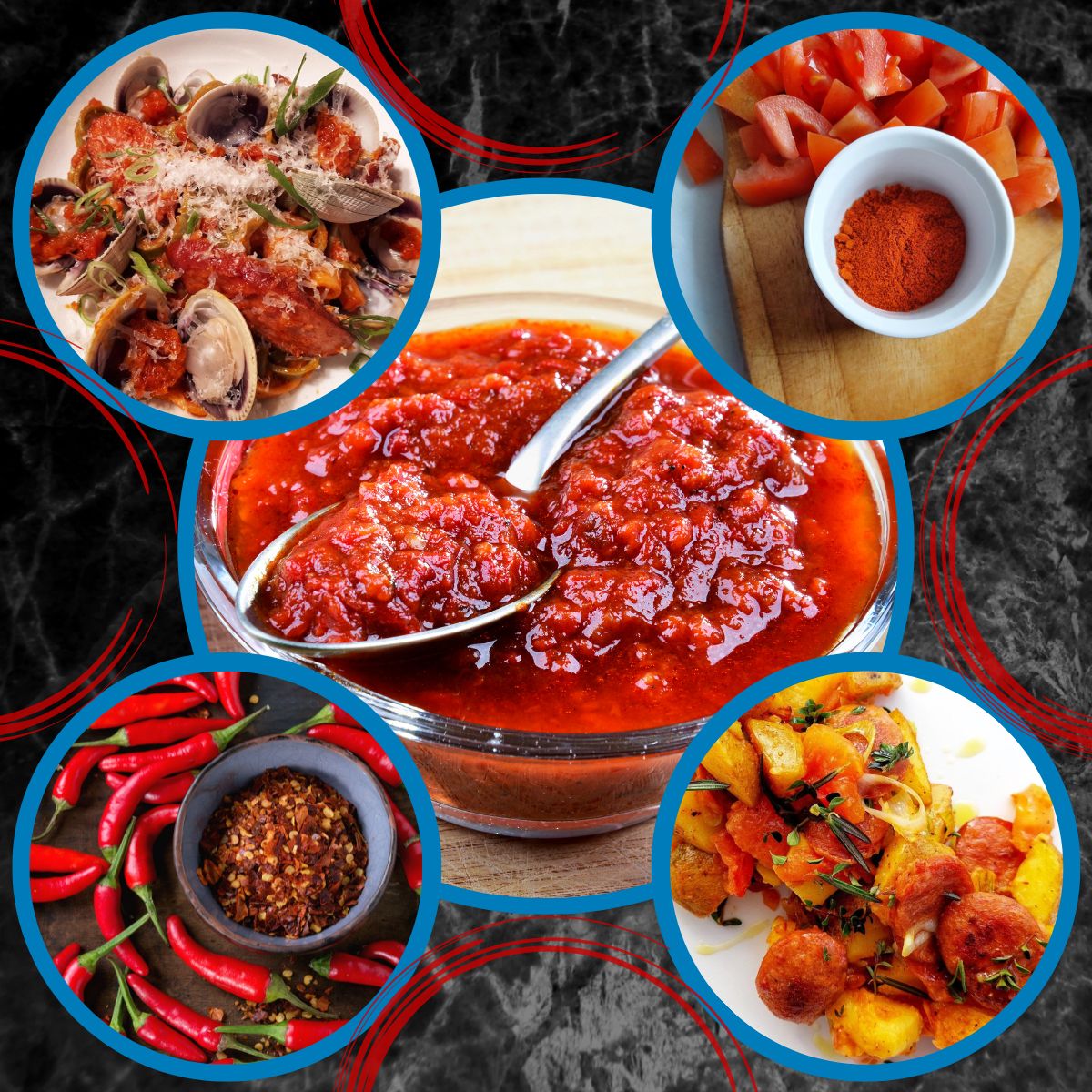
Making derivatives of tomato sauce is a fantastic way to add diversity to this classic French tomato sauce. The 5 tomato sauce derivatives we will explore in this post share some common ingredients
Tomatoes, onions, garlic, and olive oil. We recommend using tomato concassé, which are peeled and seeded tomatoes, for the best results.
While peeling tomatoes may seem daunting, there are some tips and tricks that will make the process a breeze.
As a chef, I prefer to use Beefsteak, Vine-Ripened, or Heirloom tomatoes for these derivatives of tomato sauce. These 3 varieties have their own flavor profiles and are great for cooking with.
Making tomato concassé was one of the first things I learned when I started cooking decades ago. This is an awesome way to prep tomatoes before making derivatives of tomato sauce.
Next, place the tomatoes in boiling water for approximately 1-2 minutes, or until the skin starts to loosen. Afterward, place the tomatoes in a bowl of ice water to halt the cooking process.
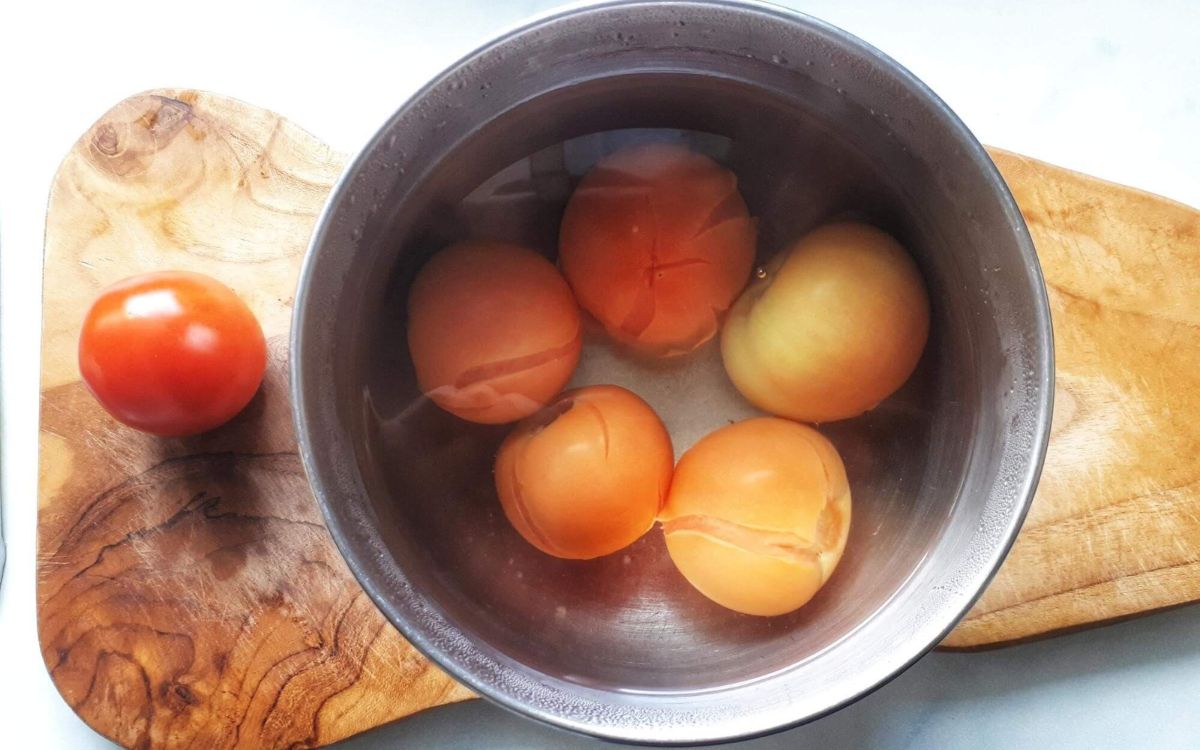
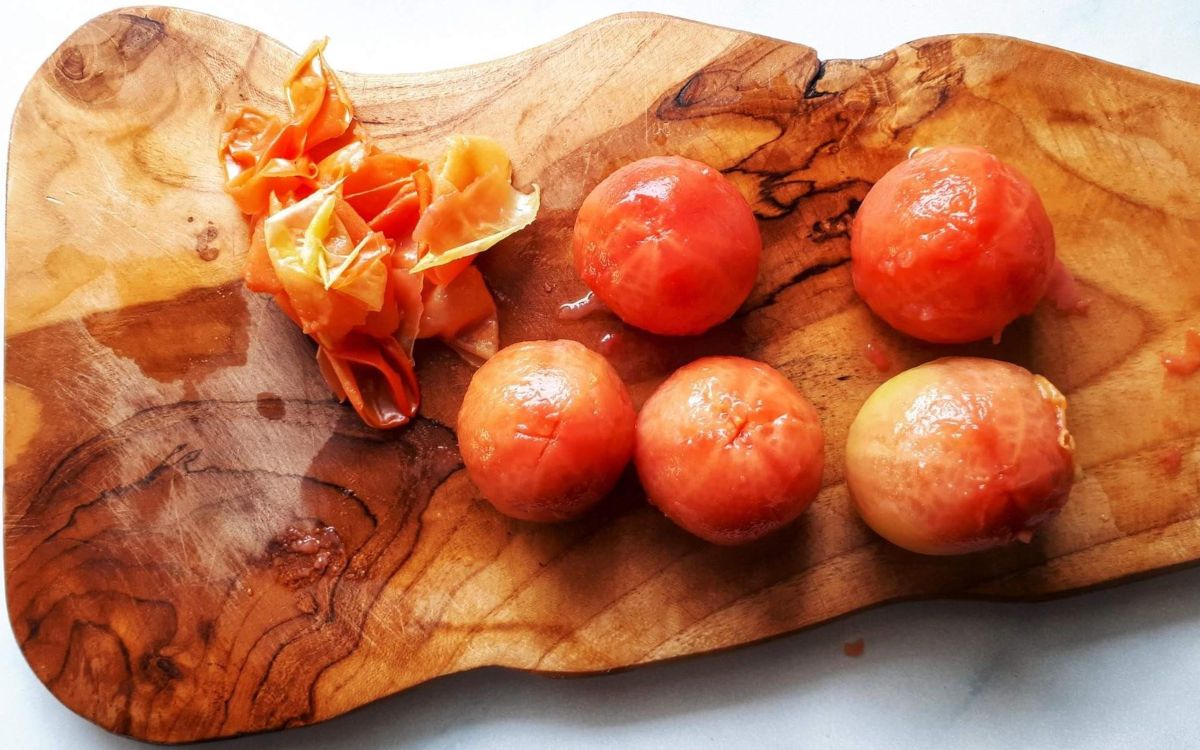
Chefs Pro Tip — Once you notice the skins beginning to split, take the tomatoes out of the boiling water. Transfer them to the iced water to stop the cooking process. After a few moments in the iced water, the skins will slide off the tomatoes with ease.
Don’t let those precious tomato seeds go to waste! Keep them, as they are bursting with flavor, and make a great addition when cooking flavorful homemade stock.
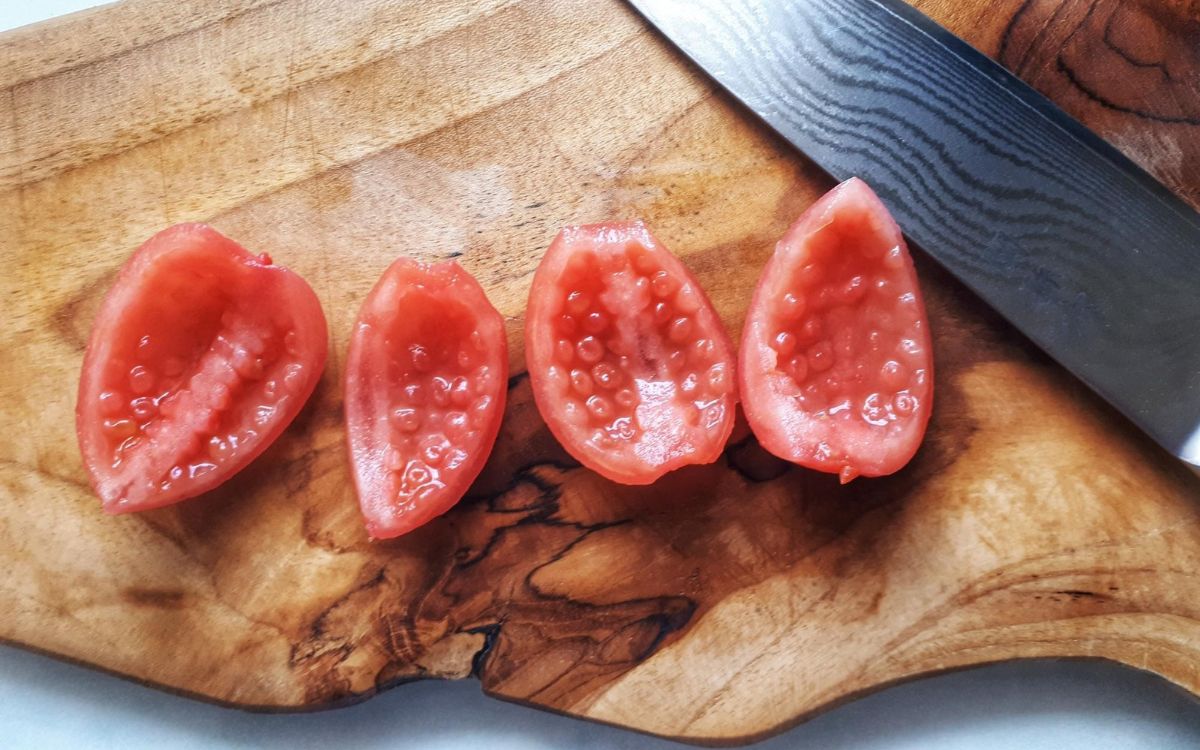
How to season food is an art that combines creativity, intuition, and a deep understanding of flavors. That transforms ordinary ingredients into extraordinary culinary masterpieces.
Provençale sauce is a vibrant and one of the flavorful derivatives of tomato sauce. This sauce has been around for centuries and has become a staple in our kitchens.
With the addition of herbs like fennel seeds, thyme, rosemary, and basil. This gives the sauce a distinctly French flavor profile that is herbaceous and aromatic.
As chefs, we like to put our own spin on traditional Provençale sauce by using a combination of both fresh and dried herbs.
To achieve the perfect balance of flavors, we add the dried herbs at the beginning of the cooking process. Allowing them to infuse the sauce with their unique taste and aroma.
Then, toward the end of the cooking process. We add fresh herbs to give the sauce a burst of bright and herbaceous flavors. Even with this twist, we still consider our sauce a derivative of tomato sauce.
Provençale sauce is the perfect base for pasta dishes. It is also an excellent sauce for fish, seafood, and vegetable dishes.
Escoffier’s Provençale sauce is a simple tomato sauce made from tomato concassé. And flavored with fresh parsley, garlic, and a small amount of sugar.
Chefs Pro Tip — Here are some tips for making a delicious Provençale sauce.
A recipe calls for 1 teaspoon of fresh, use ¼ teaspoon of dried.
You can also add other herbs like tarragon, chervil, sage, or chives. These herbs can add a diverse flavor to the finished sauce.
Algerian sauce is an extraordinary and delectable, one of the unique derivatives of tomato sauce. That will tantalize your taste buds. This sauce is a perfect marriage of French and Algerian cuisine.
Offering a unique blend of flavors that will leave you craving for more. It is important to note that this Algerian sauce is not to be confused with the fiery and spicy harissa sauce.
What distinguishes Algerian sauce from other tomato-based sauces is its bold and exotic flavors. The spices used in this sauce are a perfect balance of North African and Mediterranean flavors, making it a perfect accompaniment to various dishes.
The combination of cumin, coriander, smoked paprika, and chili flakes adds a distinctive aroma and flavor to the sauce.
This makes it perfect for pairing with different meats such as chicken, pork, and lamb. Additionally, the sauce is also excellent on burgers, tacos, or quesadillas, and great as a dip for bread.
Algerian sauce is an excellent way to add a burst of flavor to any dish. Its versatility means it can be used in many different ways, such as a dipping sauce or marinade.
Chefs Pro Tip — Here are some tips for making a delicious Algerian sauce.
You can also replace the cumin, and coriander. Try using mace, and nutmeg for a unique flavor profile.
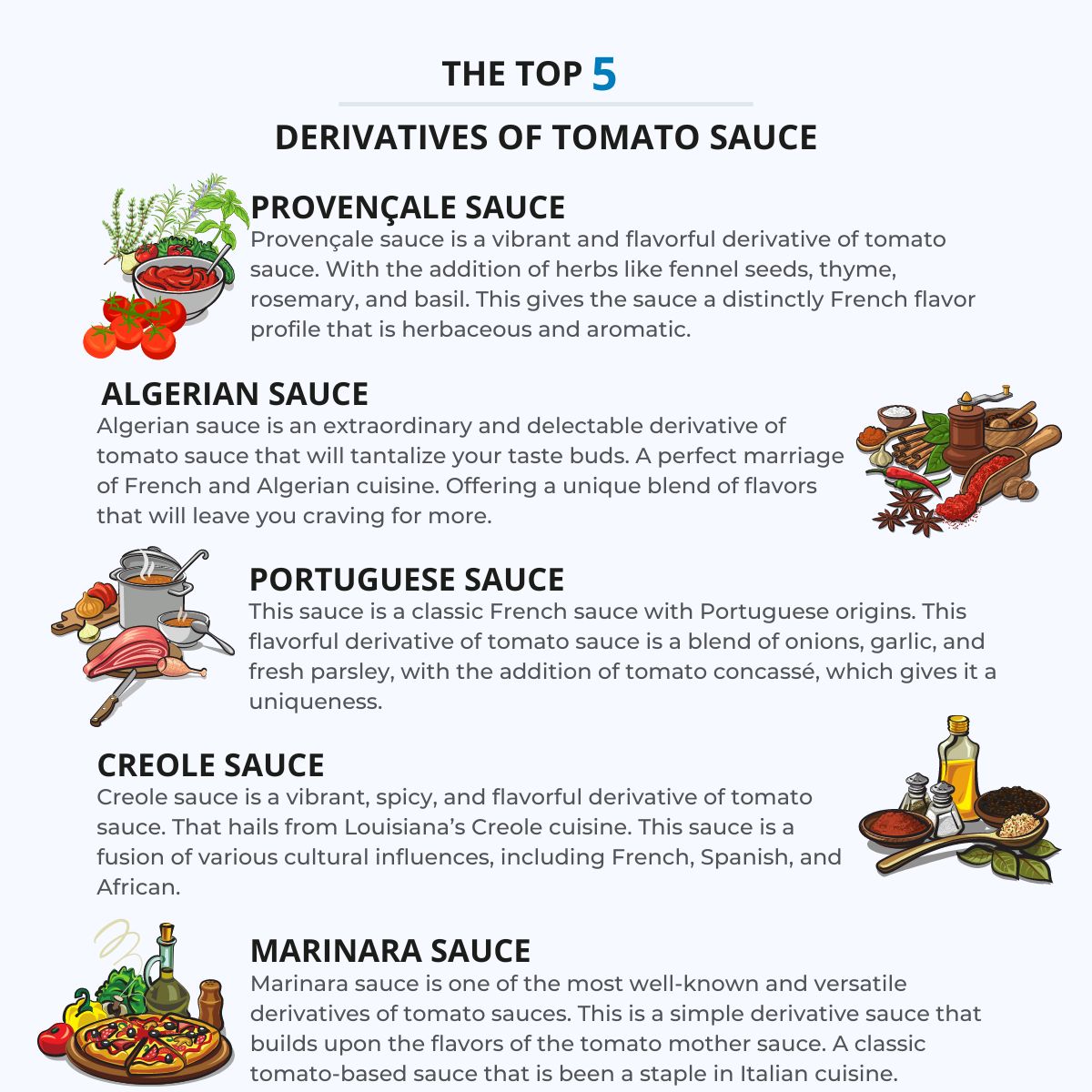
This sauce is a classic French sauce with Portuguese origins. Portuguese sauce is a culinary masterpiece that brings together a variety of flavors and ingredients.
Another of the flavorful derivatives of tomato sauce. This is a blend of onions, garlic, and fresh parsley, with the addition of tomato concassé, which gives it a fresh touch.
What sets Portuguese sauce apart from other tomato-based sauces is its versatility. It pairs beautifully with a wide range of dishes and ingredients, making it a staple in many kitchens including ours.
The subtle herbaceous sweetness of the fresh parsley and the tanginess of the tomatoes make it a perfect sauce for fish, shellfish, chicken, vegetables, rice, or pasta. It can even be used as a base for a hearty seafood stew.
Chefs Pro Tip — Here are some tips for making a delicious Portuguese sauce.
Creole sauce is a vibrant, spicy, and flavorful. Another of the derivatives of tomato sauce that is slightly different. As it hails from Louisiana’s Creole cuisine.
This sauce is a fusion of various cultural influences, including French, Spanish, and African. Creole sauce is a versatile sauce that can be used in a variety of dishes.
It is a staple in many Cajun and Creole dishes, such as gumbo, jambalaya, and red beans and rice. However, it can also be used as a condiment for roasted vegetables or as a dipping sauce.
Creole sauce we use occasionally. Its robust and tangy taste is perfect for creating hearty and comforting dishes like seafood casseroles.
It also pairs perfectly with pasta dishes, bringing a punchy and zesty kick to the dish. Creole sauce is a great accompaniment to braised chicken thighs, adding depth and complexity to the dish.
Chefs Pro Tip — Here are some tips for making a delicious Creole sauce.
While the green pepper adds a slight bitterness that harmonizes with the tomatoes and red peppers. Additionally, these vibrant vegetables bring an eye-catching pop of color to the final product.
Hot sauce is a hot topic, everyone has their favorite. We have a couple of Louisiana favorites we use. Frank’s Red Hot Original, Blue Bayou Louisiana Pepper Sauce, or Slap Ya Mama Cajun Pepper.
Marinara sauce is one of the most well-known and versatile derivatives of tomato sauces. This is a simple derivative sauce that builds upon the flavors of the tomato mother sauce.
Marinara sauce is a classic tomato-based sauce that has been a staple in Italian cuisine for centuries.
The origins of marinara sauce are unclear. Possibly from the seafaring city of Naples or the island of Sicily.
Where fishermen would make a quick sauce using tomatoes, garlic, and olive oil to serve with their daily catch.
Marinara sauce can be used in a variety of dishes, from classic spaghetti and meatballs to baked ziti, and lasagna. Even as a base sauce for pizza. It’s also a great base for soups, stews, and casseroles.
Chefs Pro Tip — Here are some tips for making a delicious Marinara sauce.
This is achieved by cooking the tomatoes down until they break down and release their juices. This also allows the flavors of the other ingredients to meld together and develop a deep, rich flavor.
This can be achieved by adding a pinch of sugar or using naturally sweet ingredients like honey or stewed pureed carrots.
When adding dried herbs and spices add them at the beginning. As for saffron, you can add it at the end of the sauce making process.
The benefits of using derivatives of tomato sauce in your cooking are to add flavor, color, and texture to your meals. Additionally, tomato sauce derivatives can be used as a base for a variety of dishes, including pasta, casseroles, soups, and stews.
5 essential derivatives of tomato sauce are:
Provençale sauce
Algerian Sauce
Portuguese Sauce
Creole Sauce
Marinara Sauce
Each of these sauces has its own unique flavor profile. And can be used in a variety of dishes to add depth and complexity to your cooking.
These tomato sauce derivatives can be used in a variety of dishes. Including but not limited to pasta dishes like pappardelle, lasagna, and spaghetti. Meat or vegetable casseroles, bases for soups, and stews, and even as a dipping sauce for bread.
They are versatile sauces and can be paired with different proteins, such as chicken, pork, seafood, or tofu, as well as vegetables and grains. Get creative with how you use these sauces, your limitation is your imagination.
Yes, you can freeze the derivatives of tomato sauce. Simply cool the sauce completely, then transfer it to an airtight container or freezer bag.
Freeze for up to 3 months. Thaw in the refrigerator overnight before reheating and using in your favorite dishes.
As a chef, I can attest that these derivatives of tomato sauce are a culinary delight. From the zesty and exotic Algerian sauce to the classic and herbaceous Portuguese sauce.
These sauces are versatile and packed with flavor. All these sauces have one thing in common they are derivatives of the classic French tomato mother sauce. Which makes them familiar yet unique.
However, the five derivatives of tomato sauce mentioned in this article are just the tip of the iceberg. There are countless variations and recipes out there, each with its own unique ingredients and flavors.
By experimenting with different spices, herbs, and vegetables, you can create some truly delicious and healthy sauces.
So, start to get creative and explore the world of tomato sauce derivatives in your own kitchen. Familiarize yourself with these five derivatives of tomato sauces and use them as a starting point to create your own variations, let your culinary imagination run wild!